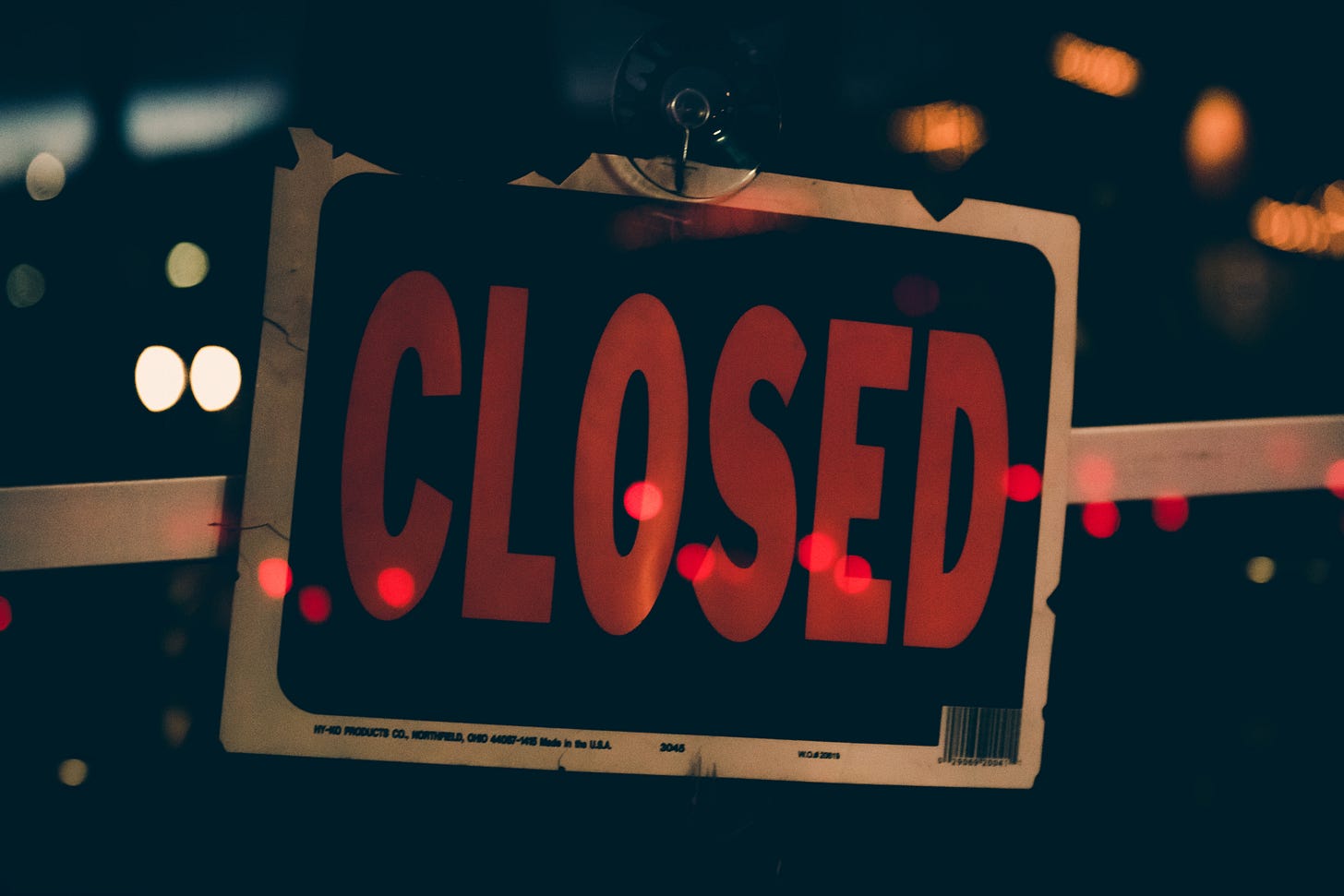It’s what separates the top performers from the average ones in sales. The greats from the goods.
Closing.
If Discovery is the most important part of the sales process, closing is where everything comes full circle and put on display.
Its where prospecting, discovery, overcoming objections, and negotiation is tested, tried and graded for all to see.
Movement to that final, coveted Closed Won, signed contract can seem like the longest yard gained ever.
In this week’s edition of Stretch Weekly -
Jeb Blount and Michelle Rockwood teach how to compel people to lean into you by leveraging the choice-based closing method.
Gong helps us understand how the best salespeople handle pricing conversations to close more deals in their Top 10 Rules of Pricing Conversations.
And of course, more snippets to help move the needle towards more closed deals and more signed contracts.
THANKS for reading!!
-Grant
And lastly - as always, if you find this newsletter valuable- subscribe or share it with someone who might as well 👊.
STRETCH SHARES
Choice Based Closing
Jeb Blount and Michelle Rockwood teach how to compel people to lean into you by leveraging the choice-based closing method. It's all about selling without selling. Gaining command of the call.
Instead of just getting buyers to a "yes" - sellers need to systematically bring people through a conversation with an end goal of making a choice about their next decision.
Help buyers understand what all the options are, even outside of your solution
WHY - understand what their choices are really about.
Relaxed, assertive confidence is key in building a pipeline AND helping customers choose to move forward in the sales process.
It's important to set boundaries with buyers (meeting times, expectations, timing, etc.) to help maintain value with your time and solution.
Don't ASSUME anything which leads to skipping the entire sales process and subsequent value building
"Are we even a fit?" Upfront contract (Scarcity/Exclusivity) pulls people in. But helps outline this is a mutual decision to move forward.
As sellers, our goal is to provoke people into becoming self-aware that there is a need to change.
A good episode that should guide sellers to a more confident, impactful system and gain more command of the sales call.
10 Golden Rules of Pricing Conversations
Pricing conversations make or break your deals. Gong analyzed over 519,000 call recordings with AI to understand how the best salespeople handle pricing conversations to close more deals. Gong’s Top 10 rules of pricing conversations are:
Don’t say list price. Sales cycles lengthen by 19% when sales reps say “list price”, “typical price”, or “standard price” to a buyer at any point in a deal.
Use “APPROVED PRICING” instead.
Establish value before pricing.
Answer with fewer words. When you overexplain your pricing, it signals that you're insecure about it or don’t fully believe the pricing is justified.
Pause after pricing. Top sellers pause for 2.1 seconds after stating their price. It signals rock-solid confidence in their pricing.
Discuss budget on the first call. Win rates are highest when you discuss budget on the first call.
Talk pricing early. Win rates drop significantly if you wait to bring up pricing.
Don’t apologize when you name your price. Do apologize when you can’t accept their offer.
Don’t use WE when negotiating price. Say “I” to force the buyer to negotiate with a person, which is tougher for them.
Don’t negotiate over email. Use phone or video so your negotiations are more personal and you maintain power.
STRETCH SNIPPETS
💵 Is the buyer asking for a discount because they just /don't/ believe your product/solution is worth the $$$ or are they trying to make the numbers work around budgetary constraints? Sarah Brazier gives a couple great tips on how to position and refocus the conversation.
✅ After analyzing 512,740 deals ranging from $1,000 to more than $1 million, Michael Gaza posted on how many emails, meetings, and stakeholders are needed to close a deal. My favorite stat: If the deal is worth more than $100K, you are 53% more likely to win the deal if you have more than 10 meetings.
❌ Kyle Coleman explains the Top 6 immediate deal-killers (as ranked by buyers from LinkedIn’s 2021 State of Sales Survey) and says 5 of which are completely in a rep’s control.
🤔 Most sales are made during discovery, NOT at the closing stage of a sales cycle, Ian Koniak says - so rather than pitching your product or scheduling a demo early on, pitch your discovery process first.
🎯 Jason Lemkin teaches us How to Close More Revenue Today — With The Leads You Already Have
🧠 Mindset
“Customers don’t care at all whether you close the deal or not. They care about improving their business. It’s easy to forget this in the heat of a sales cycle.” – Aaron Ross
Thanks for reading!
My hope is if you find this valuable, consider sharing it with friends (or signing up if you haven’t already).
— Grant 👋
About stretch vp: confessions, learnings, and insights from sales leaders in SaaS
Compiled and aggregated from a network of sales leaders in SaaS, Stretch VP showcases learnings, insights, and experiences as well as best practices to overcome common hurdles, obstacles, and setbacks in your quest for excellence as a sales leader in SaaS.
Are you a VP, Director, thought leader, or content producer in the SaaS space? We’d love to have you contribute. Contact Me HERE.
Also… check out the blog or follow on Twitter



